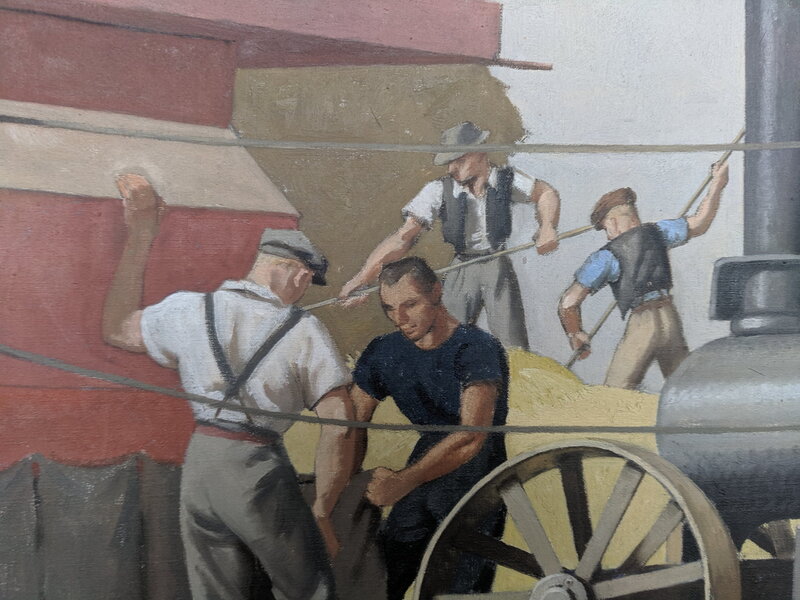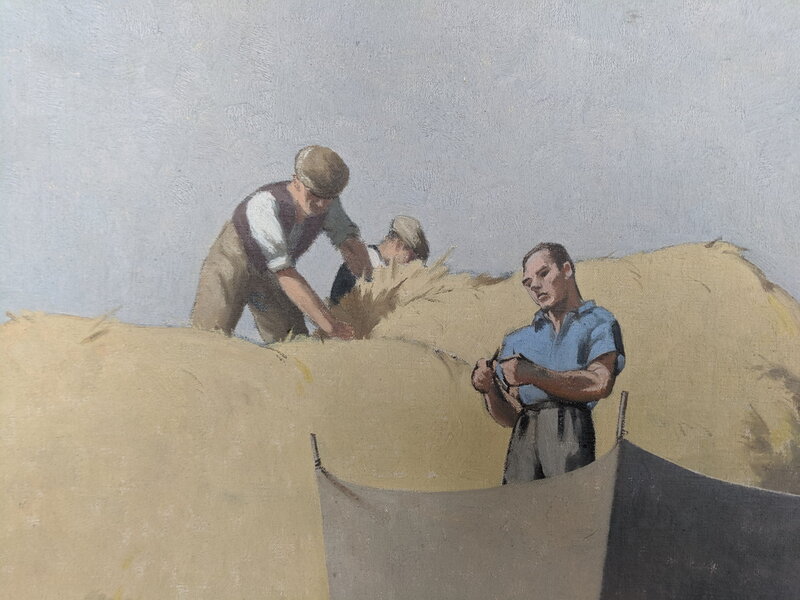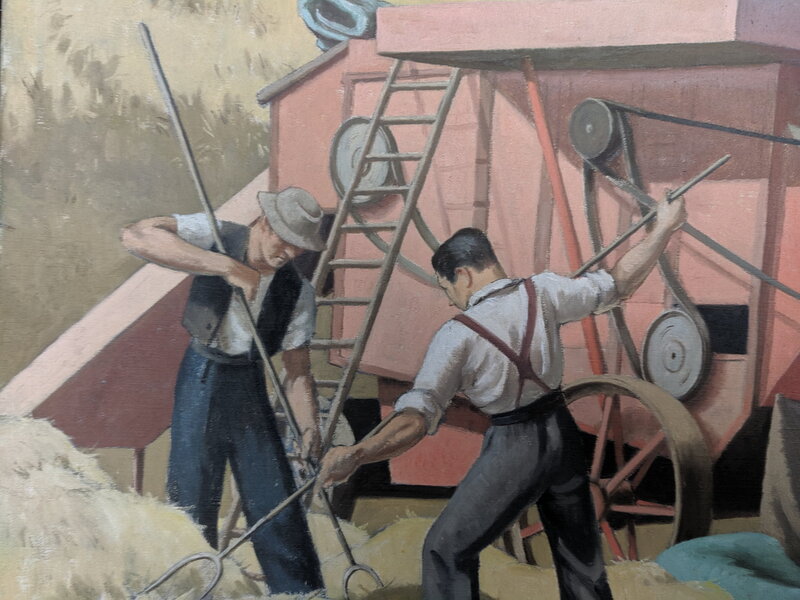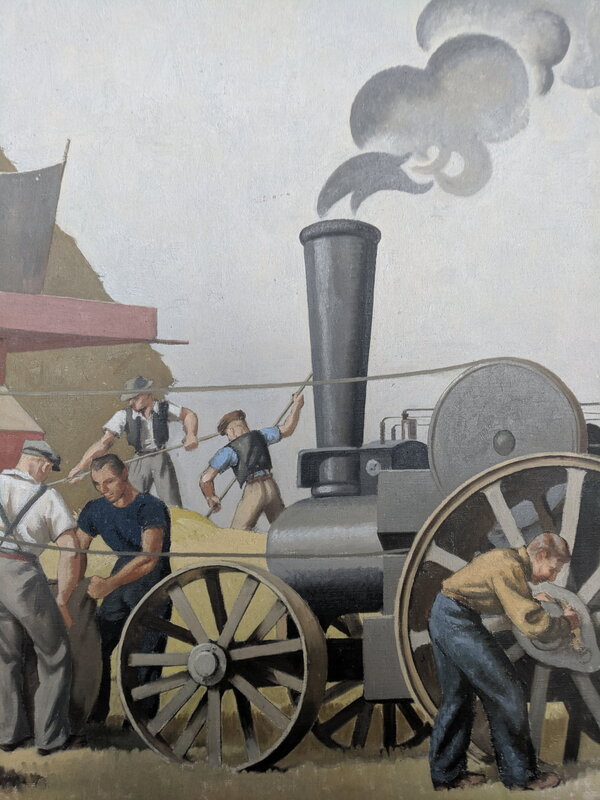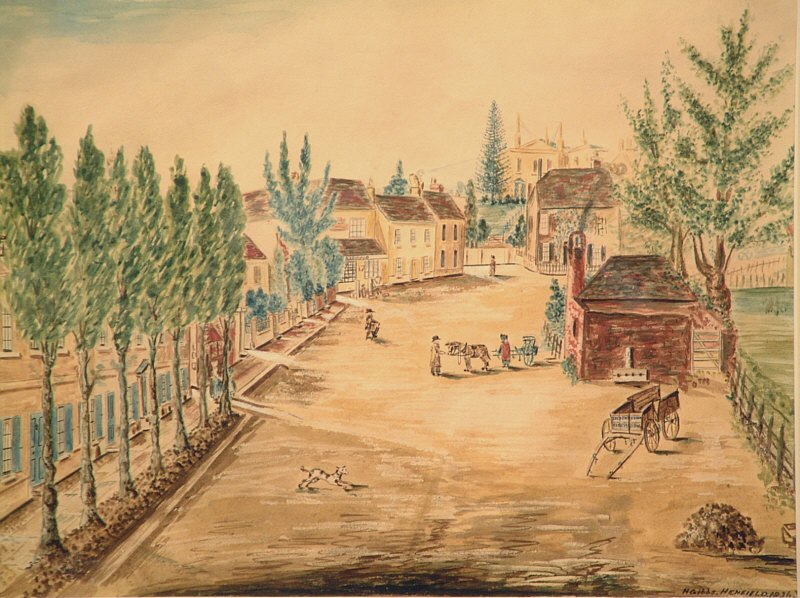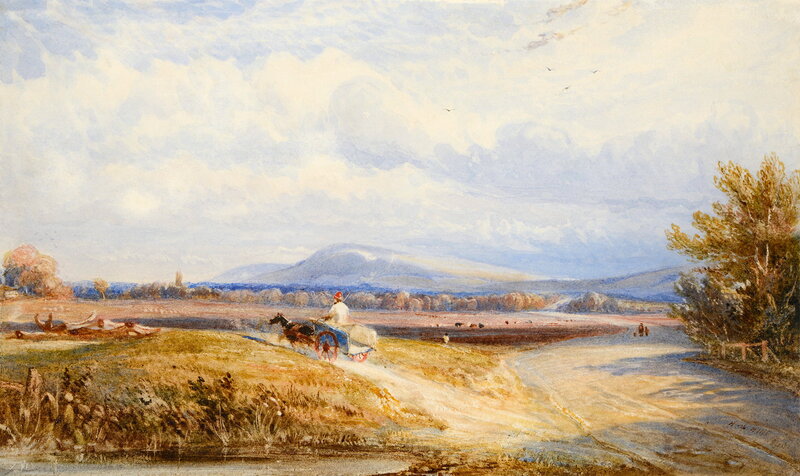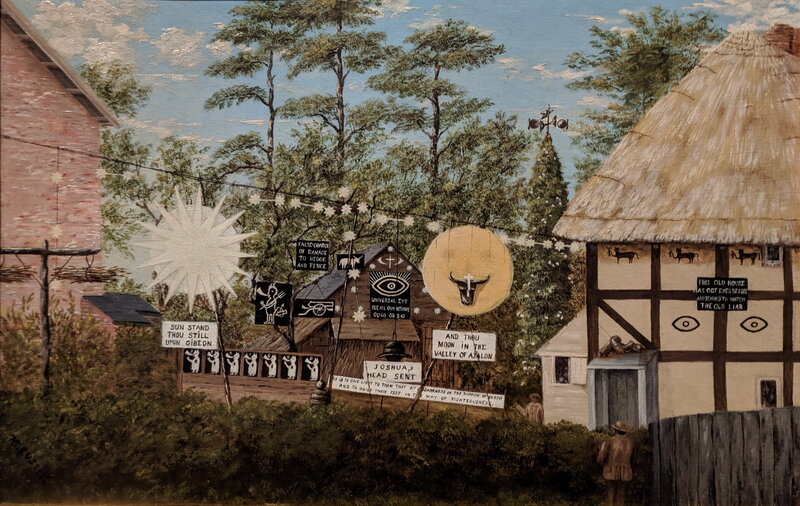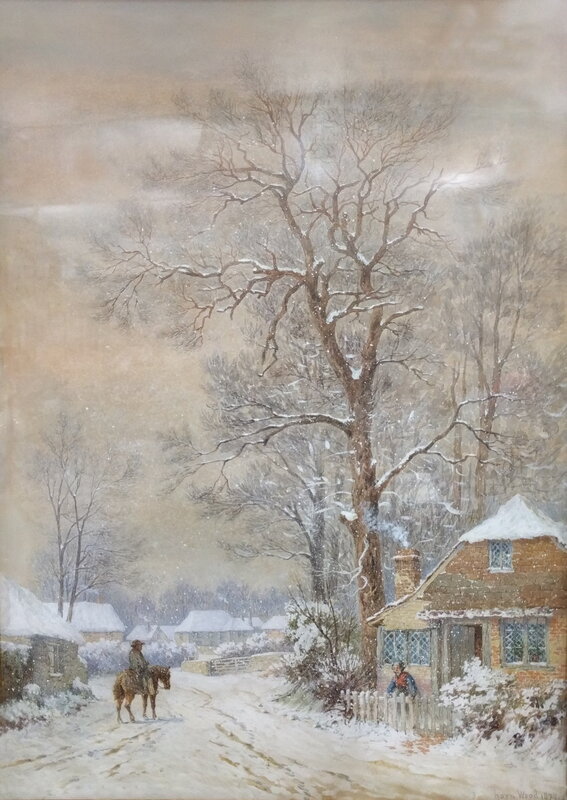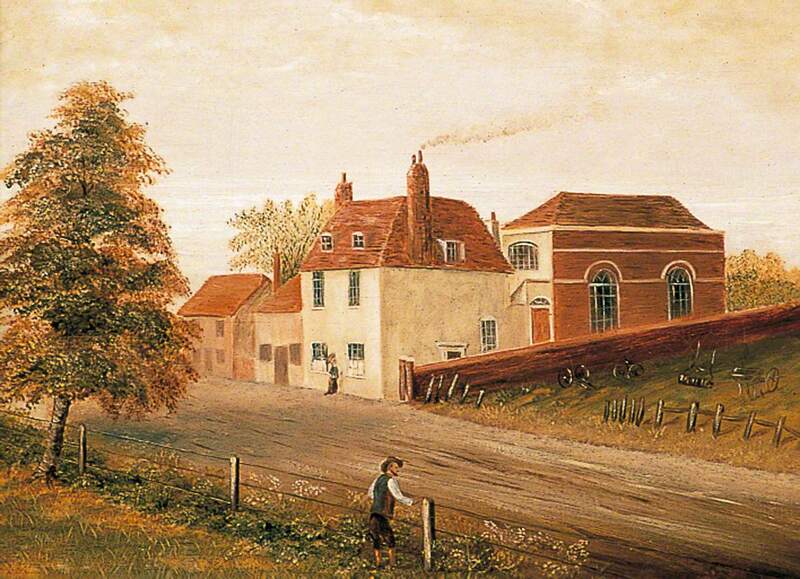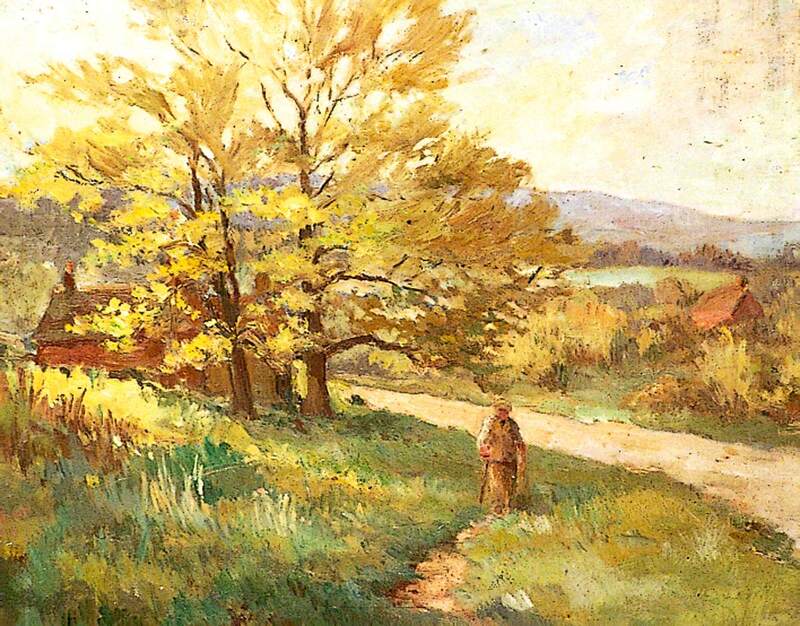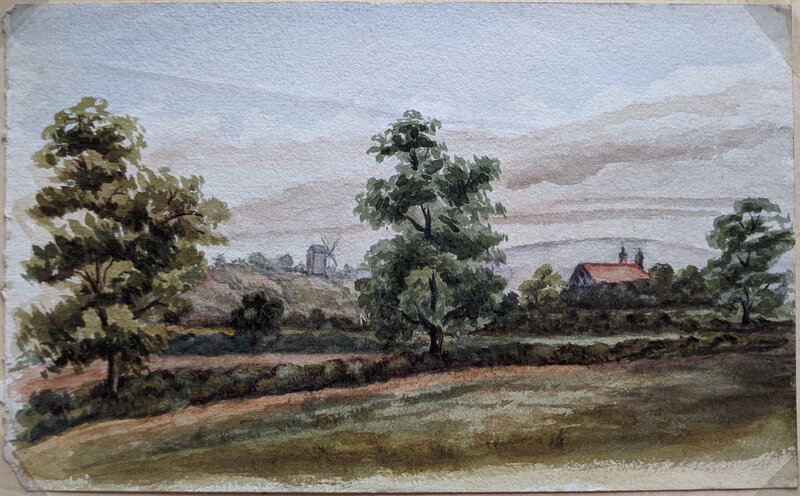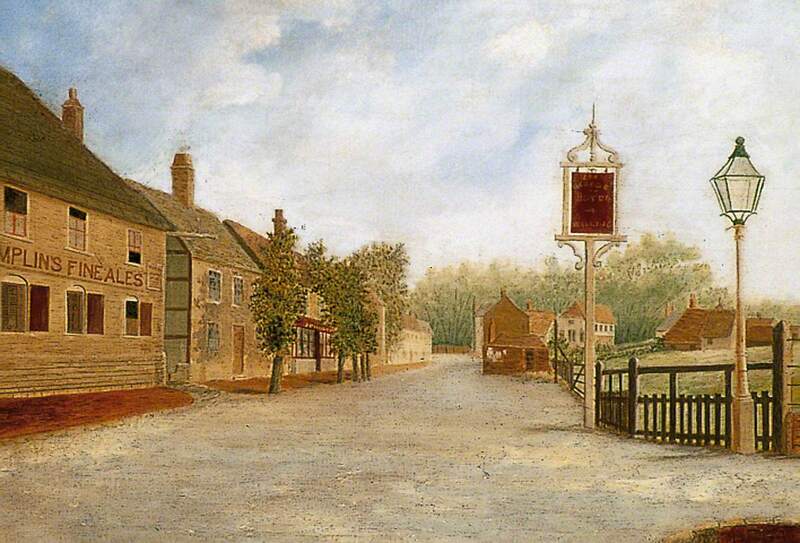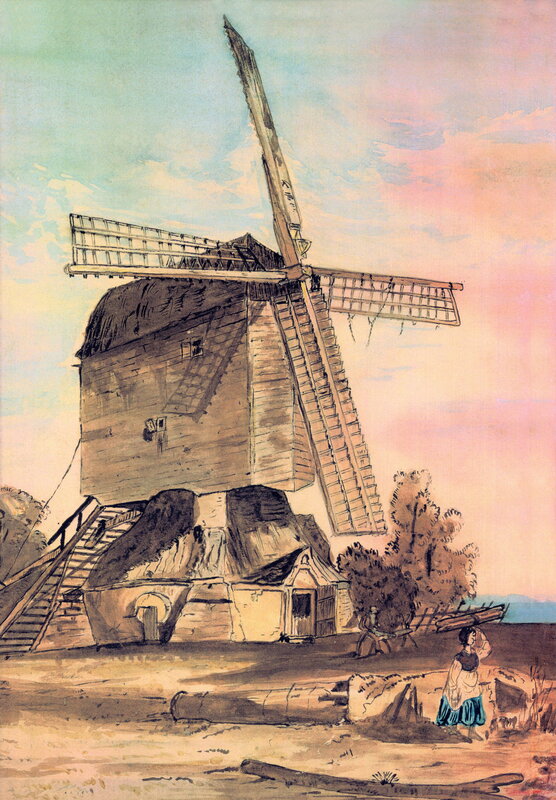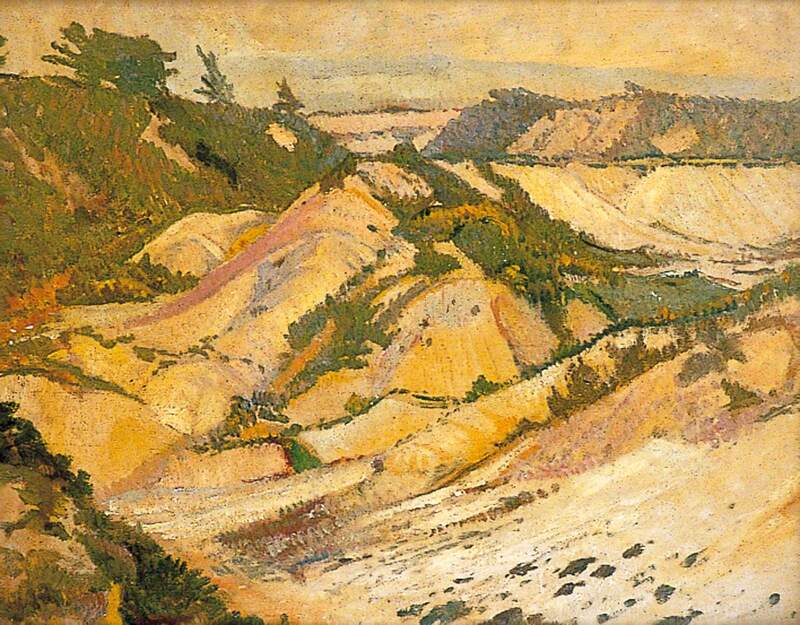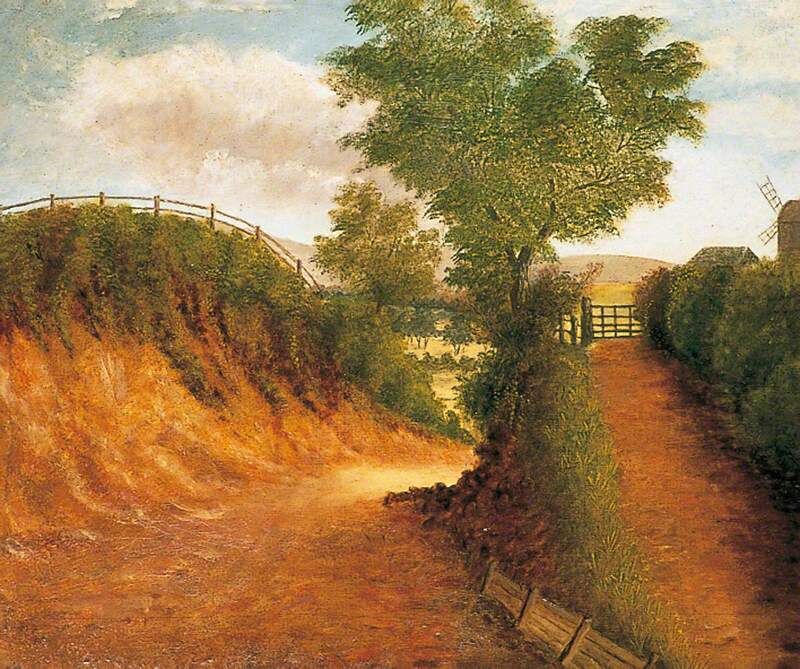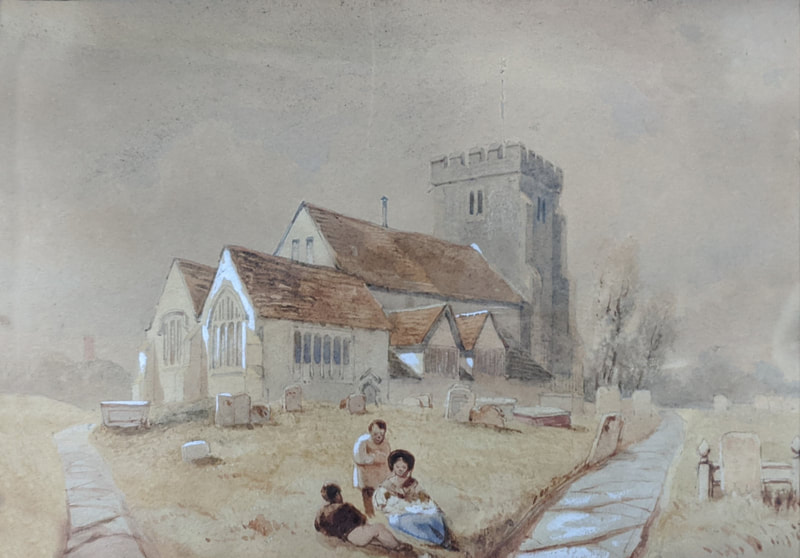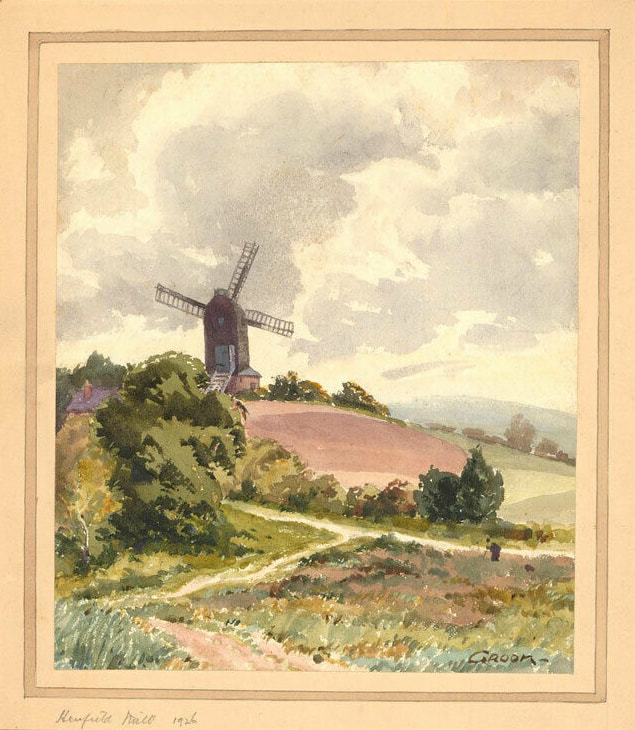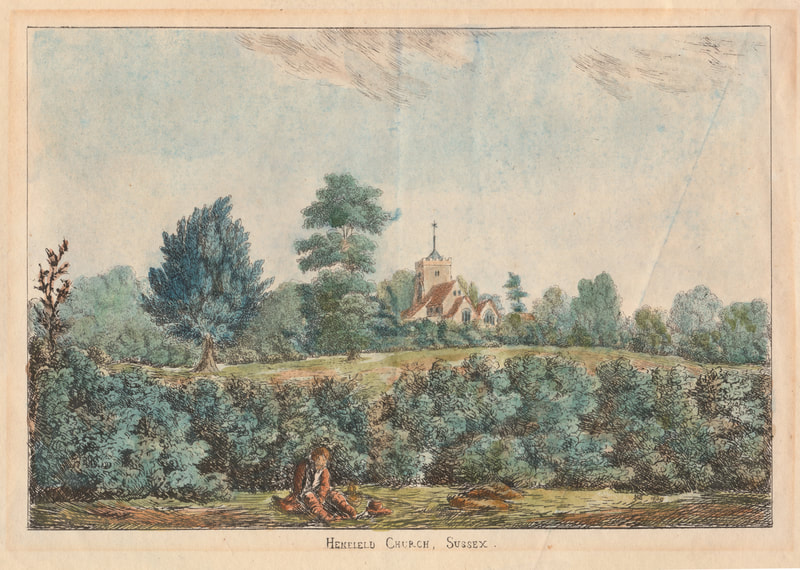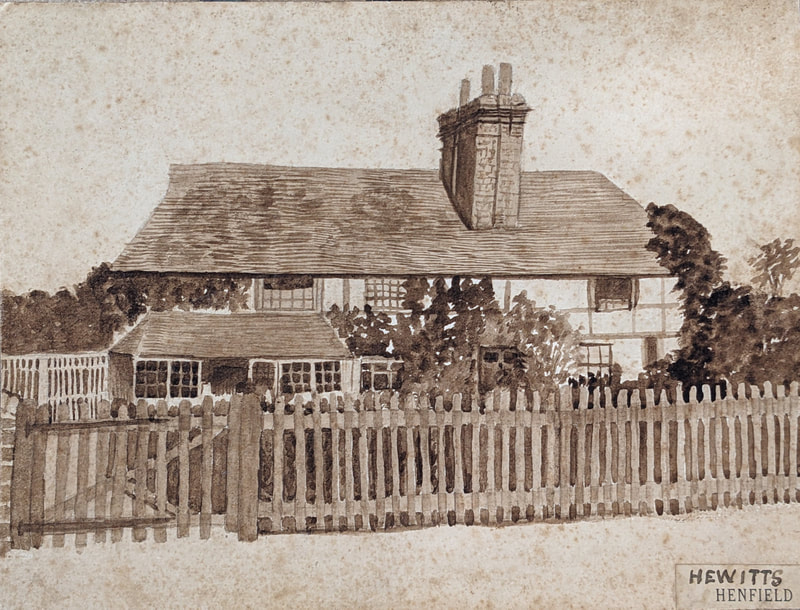Henfield Museum is lucky to have a sizeable and varied collection of art, with some pieces considered of national importance. Both by locally based and visiting artists, we feature a selection below.
Try your hand at a jigsaw painting!
Try your hand at a jigsaw painting!
Featured Artist: Malcolm Midwood Milne
Paintings for the Festival of Britain, 1951
Born in Cheshire and trained as an architect, Malcolm Midwood Milne (1887 - 1954) arrived in Henfield in 1926 with his sister Hilda, a fellow painter. They moved into 'Dykes' to the east of Henfield Common, Malcolm subsequently building 'Dykes Studio' (now 'Camellias'), while Hilda's was in the small cottage of 'Dogham Place' at the bottom of the garden, the ruins of which can be seen today when walking along the top of the Common.
The following set of four paintings showing the progression of Henfield over the centuries were produced for the exhibition held in Henfield to mark the Festival of Britain in 1951.
1. Primeval Henfield, West Sussex. The artist has used an impressionistic style to show the river and heavily-wooded area which existed in this part of Sussex at that time full of beasts, birds and skin-clad humans.
2. Henfield, West Sussex, AD 1000. An impressionistic view of the countryside looking north towards the village, which is shown in the centre of the painting. In the foreground the east-west Roman road crosses tracks to Henfield and a tributary of the River Adur. In the painting are animals, watermills and men at work.
3. Henfield, 1500 AD. An impressionistic style has been used to show the village and surrounding area at this time. In the foreground is the Bishop of Chichester, the owner of the manor, in his deer park. The village is in the middle distance with the road leading to it on the left. Top right is the river Adur leading down to the South Coast through a valley in the South Downs.
4. Henfield High Street, West Sussex, AD 1850. This gives a realistic though impressionistic view of the High Street at this time, and was based on a contemporary photograph. The George Hotel and other buildings on the left still exist today.
1. Primeval Henfield, West Sussex. The artist has used an impressionistic style to show the river and heavily-wooded area which existed in this part of Sussex at that time full of beasts, birds and skin-clad humans.
2. Henfield, West Sussex, AD 1000. An impressionistic view of the countryside looking north towards the village, which is shown in the centre of the painting. In the foreground the east-west Roman road crosses tracks to Henfield and a tributary of the River Adur. In the painting are animals, watermills and men at work.
3. Henfield, 1500 AD. An impressionistic style has been used to show the village and surrounding area at this time. In the foreground is the Bishop of Chichester, the owner of the manor, in his deer park. The village is in the middle distance with the road leading to it on the left. Top right is the river Adur leading down to the South Coast through a valley in the South Downs.
4. Henfield High Street, West Sussex, AD 1850. This gives a realistic though impressionistic view of the High Street at this time, and was based on a contemporary photograph. The George Hotel and other buildings on the left still exist today.
Highlight: 'Threshing' by Veronica Burleigh, c. 1930
Born in 1909, Veronica was the daughter of Brighton artists Averill & Charles Burleigh. Studying at the Slade School of Fine Art from 1927-30 under artist (and surgeon) Henry Tonks, she moved to Blackstone near Henfield in 1970. Frequently travelling to South Africa, she made annual exhibitions in Rhodesia, holding 23 one man shows there. Veronica died in 1999 and is buried at St. Peter's, Woodmancote, her stone stating ‘Sussex Artist’.
This oil on canvas scene was likely painted in Sussex, during her earlier life when steam threshing was still common. Exhibitions of Burleigh’s work were held at the New English Art Club; Royal Academy; Royal Institute of Painters in Watercolour; Royal Institute of Oil Painters; Society of Women Artists, Sussex Women’s Art Club and via the Sussex Painters.
Some information courtesy of the Hatfield Hines Gallery and the Toovey's blog.
This oil on canvas scene was likely painted in Sussex, during her earlier life when steam threshing was still common. Exhibitions of Burleigh’s work were held at the New English Art Club; Royal Academy; Royal Institute of Painters in Watercolour; Royal Institute of Oil Painters; Society of Women Artists, Sussex Women’s Art Club and via the Sussex Painters.
Some information courtesy of the Hatfield Hines Gallery and the Toovey's blog.
Selected Paintings from Our Collection
Images on this page are licensed for educational and non commercial use under the Creative Commons Attribution-NonCommercial-ShareAlike (CC BY-NC-SA) . Please credit 'Henfield Museum' and contact us if you would like to use an image for commercial purposes or at a higher quality.
Images on this page are licensed for educational and non commercial use under the Creative Commons Attribution-NonCommercial-ShareAlike (CC BY-NC-SA) . Please credit 'Henfield Museum' and contact us if you would like to use an image for commercial purposes or at a higher quality.
Website funded by the Friends of Henfield Museum, built & maintained by R. S. Gordon. Credit to Mike Ainscough for moving the website idea from discussion to reality.
© Henfield Museum. All rights reserved except where stated otherwise.

